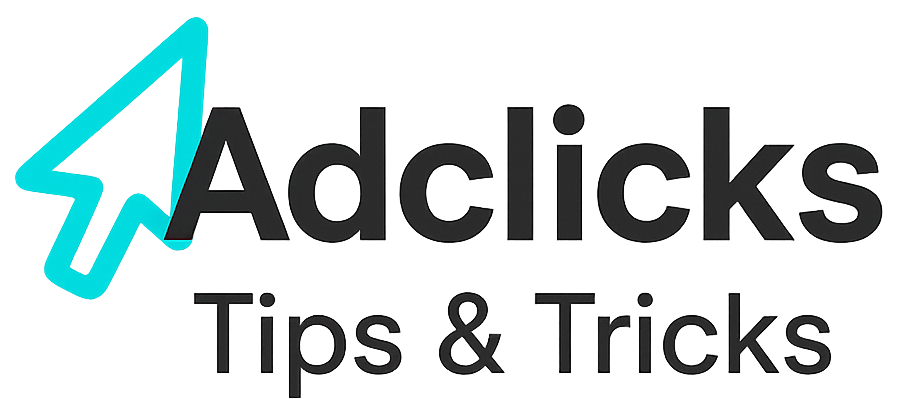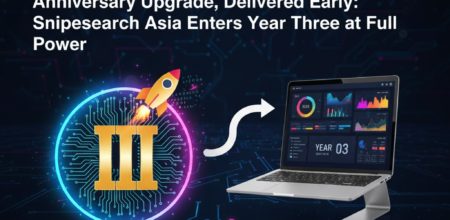What Gaia Online Is—and why it still matters
Gaia Online is a long-running, anime-centric social network built around forums, avatars, art, guilds, and roleplay. It blends message-board culture with creative identity, so users spend more time reading, posting, and curating than passive scrolling. That makes Gaia different from short-form feeds. People come to share artwork, join guild stories, trade items, compare avatar looks, and talk about games and pop culture. Time on page is real, and curiosity is high.
For a publisher, that mix means you can earn sustained attention if your content fits the culture and arrives in the right places. It also means you should meet readers with context, not hype, and send them to pages that reward their curiosity with depth. Adclicks works well in this model because it monetises engaged reading without forcing heavy ad density.
Gaia users still value the old web’s sense of community. They recognise names and signatures. They follow creators over months, not minutes. They click when posts feel personal, helpful, and relevant to their hobbies. If you bring tutorials, references, deep dives, or thoughtful commentary, you can become a familiar resource. The same is true if you publish art showcases, cosplay features, or retro fandom history.
The tone that wins is friendly and practical. The structure that wins is simple and skimmable. When you deliver that and link clearly, you get repeat visits. Adclicks can then translate that steady, high-intent traffic into revenue without breaking the site’s visual rhythm.
Audience, interests, and culture you must respect
The live culture tilts toward anime, manga, JRPGs, fandom analysis, avatar fashion, creative writing, and digital art. Many members joined as teens and stayed; many others are young adults who want a calmer forum vibe. The shared values are creativity, nostalgia, and maker energy. People want to learn something, show something, or join something. They reward guides, references, and inspiration boards.
They pass around helpful links. They also expect courtesy. Thread hijacking, aggressive promotion, and off-topic drops get ignored or reported. If you contribute before you link, and if your link is the natural next click in the conversation, you’ll see results. Adclicks benefits from that alignment because relevant ads next to relevant reading feel like tools, not interruptions.
Interests you can serve include fan art tutorials, coloring and shading techniques, avatar outfit breakdowns, CSS tricks for profile layouts, con prep checklists, collectible spotlights, gacha economy explainers, world-building prompts for roleplay, and spoiler-safe reviews. If your site covers gaming mod guides, merch comparisons, drawing tablets, streaming setups, or OST deep dives, you’re in the sweet spot. You do not need to be everything to everyone. Pick a lane, post consistently, and speak like a helpful peer. As you become a known helper, your links become welcome. Adclicks then turns that qualified readership into earnings by matching placements to the topic at hand.
Traffic and reach: what to expect and how to measure
Gaia’s overall footprint today is smaller than its historical peak, but it remains active across forums, guilds, and profile hubs. Public trackers typically place it within the animation, comics, and fandom categories; activity clusters around North America and parts of Asia, with a strong evening and weekend bias in U.S. time zones. Treat it as a niche with depth rather than a mass-market firehose. You are aiming for high click quality, dwell time, and repeat visits. Your first goal is proof of fit: posts that earn replies and a trickle of profile clicks. Your second goal is durable referral paths from signatures, About Me panels, and evergreen forum guides that people keep bookmarking. Adclicks rewards this compounding pattern because sessions grow longer and pages per visit rise.
Measure with simple guardrails. Tag links from each forum, guild, and profile module so you can see which paths convert. Watch average engaged time, scroll depth, and return visitor rate. Expect small but steady streams that spike when a thread gets featured or quoted. Build “landing pairs”: a short teaser thread on Gaia and a matching landing page on your site that continues the story in the same voice. If a path under-performs, adjust the teaser copy, image, or placement rather than spamming more links.
When you see a path over-perform, reinforce it with a follow-up thread or a pinned signature update. As those pathways mature, Adclicks will harvest more qualified clicks with minimal extra effort.
Where links live on Gaia—and how to place them so they get clicked
Forum posts support BBCode, so inline links and image-links are standard. Signatures appear under every post, so a subtle banner or text link that points to a helpful evergreen page becomes a passive traffic engine. Profile “About Me” panels and custom profile modules can include linked text and image-links, which turn your profile into a mini hub.
Guilds and roleplay threads allow formatted posts, so chapter headers, reference posts, and resource lists can carry tasteful links that feel like part of the toolkit. The rule is always the same: give value first, link second. Adclicks converts best when the clicker expects to keep learning or seeing more of the same theme.
The strongest placements map to intent. If you publish art tutorials, link to a step-by-step page from a forum answer that solves a smaller step. If you publish avatar fashion lookbooks, link from an outfit critique to the full seasonal guide. If you publish fandom timelines, link from a lore thread to a clean chronology.
In each case, keep the link text descriptive, not salesy. Say “Full shading guide with brush settings” rather than “Click here now.” Use a small image-link in signatures so readers who skim visuals still discover you. Keep profile links tidy and current; rotate them when you launch new hubs. As traffic grows through these routes, Adclicks can monetise the follow-through without you changing the cadence or the tone that earned trust.
Publisher fit: who should test Gaia and who should skip it
Gaia rewards sites that teach, catalogue, or celebrate. If your best assets are how-to content, reference libraries, comparison pieces, and curated galleries, you are aligned. If your voice is patient, friendly, and craft-oriented, you are aligned. If your business model depends only on sensational spikes, you will be disappointed. The platform’s readers skim for useful ideas, then invest time where the value compounds. This is great for tutorial hubs, fandom encyclopaedias, manga and JRPG blogs, retro game sites, cosplay and prop build diaries, music and OST analysis, art supply tests, and web design for personal sites or profiles. Adclicks enhances those experiences by making relevant recommendations feel native to the page.
Sites that struggle here tend to post generic trend pieces, thin summaries, or one-click drops with no conversation. Gaia’s culture can spot that a mile away. The fix is simple: embed yourself in one subcommunity, listen for a week, reply with help for a week, then begin linking to articles that genuinely extend the thread. The goal is not “post more,” it is “become someone people look for.” That identity is what keeps clicks coming even when you are not online. When that identity is in place, Adclicks earns more per session because readers travel across several related pages rather than bouncing on the first load.
On-platform tactics that earn clicks without annoying anyone
Start with a complete profile that shows you belong: avatar set, short About Me that states your niche, and one or two evergreen links that promise concrete value. In forums, answer questions with small, specific wins, then add “full breakdown here” as a soft link. In guilds, publish resource posts that members can reference for months; update them when tools or trends change so the thread stays alive.
In art or avatar sections, post visual teasers that match your landing page’s hero image so the handoff feels natural. Keep your signature clean and relevant; one image-link and one text link is enough. Adclicks plays nicely with this rhythm because your pages remain fast, readable, and consistent.
Time and pacing matter. Evenings and weekends produce more eyes; seasonal beats like con season, holiday releases, or game patches create natural interest waves. Anchor your threads to those moments. Use short intros that speak in community language, not corporate copy. Invite replies with a simple question at the end of your post so the thread rises naturally. When someone asks for more detail, answer in-thread and link to the section anchor on your site that answers exactly that. This creates a sense that your site is an extended toolkit for the thread. As goodwill rises, readers explore deeper, and Adclicks benefits from that layered browsing.
Off-platform landing that keeps readers, not just clicks
Your landing pages should look like a continuation of the Gaia post that sent the click. Lead with the same headline fragment and a familiar image. Use short paragraphs, generous subheads, and clear anchors so people can jump to the section they need. Place a “related tools” or “further reading” module near the fold that routes to two or three adjacent pages. Keep any calls-to-action simple and optional. If a page sells a guide or a course, that pitch belongs at the end after the reader has received the promised value. Adclicks works best when it sits beside content, not on top of it, so use contextual placements near sections where curiosity peaks.
Think in journeys, not pages. If someone arrives from a shading tip, the next step might be brush settings, then color harmony, then publishing a portfolio. If someone arrives from an avatar lookbook, the next step might be item sourcing, then seasonal swaps, then a gallery template. Map those journeys and ensure each page gives a clear next step. This grows average session length and makes monetisation feel like a by-product of learning. As those journeys stabilize, Adclicks can be tuned by category so the right recommendations show up at the right moment without you adding any friction.
A simple program you can run this month
Pick one subcommunity and one evergreen topic. Spend three days answering questions without links. On day four, post a compact guide thread with two images and one soft link to the full version on your site. Update your signature with a small banner that points to the same hub. Add a matching link to your About Me. Mirror the thread’s timing with a clean landing page that carries the same first image and headline fragment. Return every other day to respond, expand, and add a small new tip. As the thread earns bookmarks, publish a second piece that goes one level deeper and link it from the first. Keep the cadence calm and predictable. Adclicks will monetise the longer sessions that grow from this pattern, and your analytics will show which phrases, images, and sections deserve the next guide.
The point is not to chase scale but to build a lane where your name equals “useful.” Gaia is one of the few places left where that is still the engine. When you contribute at that level, people will seek your work off-platform, talk about it in guilds, and pass your links to friends who share their hobbies. That is sustainable traffic. That is brand equity. And with Adclicks sitting quietly beside the content, that is revenue that respects the reader.
Closing thought: patience compounds here
Gaia Online rewards makers, teachers, and archivists. The audience is creative, the culture is kind when you are kind, and the traffic is modest but meaningful. If you arrive with helpful work and place clear, relevant links where they naturally belong, you will earn clicks that stick. Keep the voice peer-to-peer. Keep the journeys simple. Keep the pages fast and readable. Pair all of that with Adclicks so that your most grateful readers also become your most valuable sessions. That is how a fandom-first community becomes a dependable channel for publisher growth.
Relevant Links
- Support: https://support.snipesearch.co.uk/
- FAQ: https://adclick.snipesearch.co.uk/index.php?page=index/faq
- Contact Form: https://adclick.snipesearch.co.uk/index.php?page=user/support
Stay Connected
- Snipesocial: https://www.snipesocial.co.uk/pages/snipesearch
- Twitter: https://twitter.com/snipesearch_uk
- Facebook: https://facebook.com/snipesearch
- LinkedIn: https://linkedin.com/company/snipesearch/
- VK: https://vk.com/snipesearch_uk
- Focus: https://focus.xyz/snipesearch
- YouTube: https://youtube.com/@snipesearch
- diaspora: https://diaspora.snipesearch.net/people/7431fcf0806c013e936e00163c6e7bdf
- Friendica: https://friendica.world/profile/snipesearch
Analytic Tools
- StatCounter: https://statcounter.com/
- Rommie Visitor Analytics: https://rommie.net/




